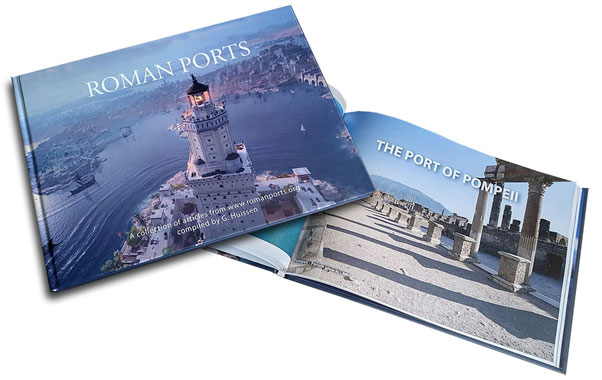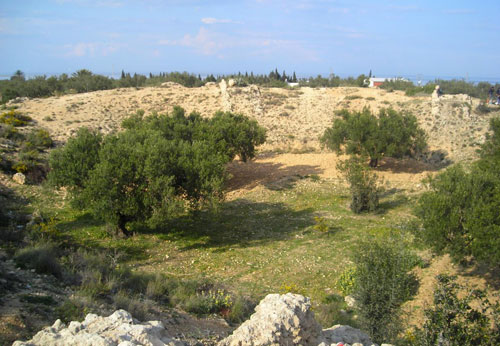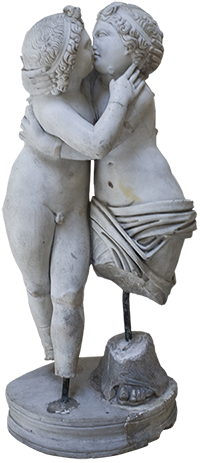Tomb 35

 Tombs 35 and 36 were built as one grave with two burial chambers, each with its own entrance, facing the Via Severiana.
Tombs 35 and 36 were built as one grave with two burial chambers, each with its own entrance, facing the Via Severiana.
Tomb 35 borders on the south to tomb 34. Tomb 36 is detached on three sides and shares with tomb 37 s passage to the graves behind.
Both graves are arranged for inhumation only.
Also beneath the floor burial places were located. The walls have double rows of arcosolia.
Between the rubbish of the collapsed walls marble fragments have been found during the excavations. This points to sarcophagi or to arcosolia with marble covers.
The floor had a black-and-white mosaic. In tomb 35 are still some traces of painted decorations with flowers in the niches.
The tombs date from a rather late period (first half of the third century AD).

- Sources
- Russel Meigs - Roman Ostia, At the Clarendon Press 1973
- Guido Calza - Necropoli nell'Isola Sacra'(1940)
- Dr. Jan Theo Bakker.
- Hilding Thylander - Inscriptions du port d'Ostie (Lund C W K Gleerup 1952).
- Ida Baldassarre, Irene Bragantini, Chiara Morselli and Franc Taglietti - Necropoli di Porto, Isola Sacra (Roma 1996).
Waardeert u ons werk?
Wordt lid van Roman Ports en ontvang het boek of doe een donatie!
 Wordt lid en steun ons
Wordt lid en steun ons
Isola Sacra Index (N)

Speciale sectie over de Romeinse begraafplaats van Portus (Engels)....
Lees meer...De teruggevonden vloot van Pisa

In 1998 werd bij toeval een ongelooflijk archeologisch erfgoed ontdekt in de buurt van het station Pisa San Rossore....
Lees meer...Leptiminus

Op de plaats van het huidige Lamta aan de oostkust van Tunesië lag al in de oudheid een havenstad met de naam Leptis Minor ....
Lees meer...Romeins Zeehandelsrecht

Het Romeinse recht is het fraaiste monument dat Rome aan West-Europa heeft nagelaten....
Lees meer...Sullecthum (Salakta)

In de Sahel, in de Tunesische provincie Madhia vinden we aan zee het kleine stadje Salakta....
Lees meer...
 We are committed to providing versions of our articles and interviews in several languages, but our first language is English.
We are committed to providing versions of our articles and interviews in several languages, but our first language is English.